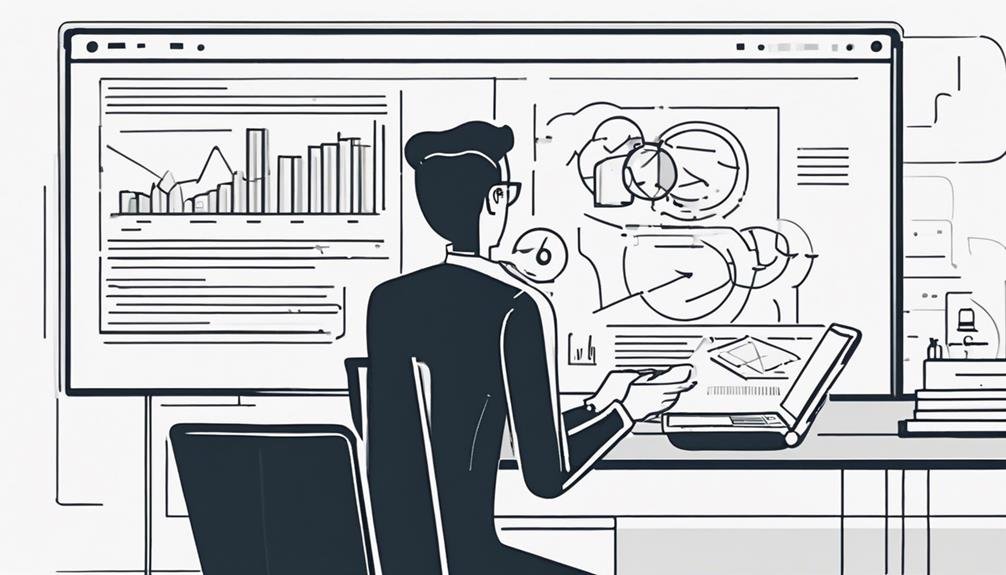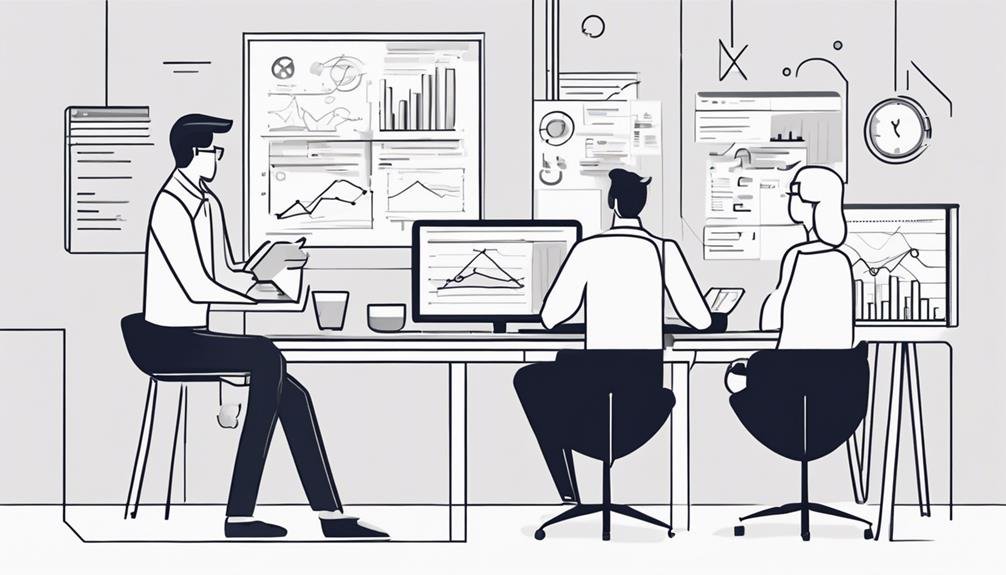To master reporting skills, focus on five essential pillars. Start with data gathering techniques like using open-ended questions and multiple sources of data. Analyze by interpreting data, recognizing patterns, and leveraging tools such as Excel or Tableau. Communicate clearly with visual storytelling and concise language. Present information efficiently, engaging your audience and demonstrating expertise. Finally, report impactfully by driving improvement, saving time, and providing insights for better decisions. Elevate your reporting capabilities by honing these pillars that will enhance your communication in the data-driven world.
Key Takeaways
- Utilize data validation techniques for accurate reporting.
- Incorporate visual storytelling for impactful communication.
- Conduct trend analysis to identify patterns and insights.
- Drive performance improvement through insightful reporting.
- Save time and optimize productivity with clear and concise reporting.
Data Gathering Techniques

When mastering reporting skills, a fundamental aspect to focus on is data gathering methods. Every day, healthcare professionals rely on accurate information to make vital decisions. To ensure the data collected is thorough and dependable, it is essential to employ effective strategies. Start by using open-ended questions during interviews and surveys. These questions encourage detailed responses, providing valuable insights. Additionally, practice active listening to fully understand the information shared and ask clarifying questions when needed. Utilize multiple sources of data, including observations and existing reports, to gain a complete view of the situation. Implement data validation techniques to verify accuracy and reliability. Organize the gathered data efficiently using tools like spreadsheets or databases for clearer analysis and presentation. By honing your data gathering techniques, you equip yourself with the necessary skills to support informed decision-making in healthcare settings.
Analytical Strategies
To excel in reporting skills, your focus must shift towards mastering analytical strategies. Data interpretation is necessary for understanding the meaning behind the numbers you gather. Trend analysis allows you to identify shifts or movements within the data over time, uncovering valuable insights. Pattern recognition helps in recognizing recurring themes or anomalies in your data, aiding in decision-making processes. Utilizing tools like Excel, Tableau, or Power BI can enhance your analytical capabilities, offering advanced features for in-depth analysis.
Understanding statistical concepts such as mean, median, and standard deviation is vital for accurate data analysis. These metrics provide a foundation for interpreting data and drawing meaningful conclusions. Creating visualizations like charts, graphs, and dashboards can help in presenting complex data in a clear and understandable manner, enhancing communication with stakeholders.
Regularly reviewing and updating reports based on feedback and changing data trends is necessary for maintaining relevance and accuracy in your reporting practices. By honing your analytical strategies, you can elevate the quality and impact of your reports.
Clear Communication Methods

Effective communication is essential in the field of reporting, guaranteeing that information is conveyed clearly and efficiently. When it comes to clear communication methods, consider the following key strategies:
- Visual storytelling: Incorporating visual elements such as charts, graphs, and infographics can make complex data more accessible and engaging for your audience.
- Effective summarization: Summarizing key points concisely at the beginning of the report and throughout can help your audience grasp the main ideas quickly and stay focused on essential information.
- Clarity in messaging: Using simple and direct language, structuring your report logically, and avoiding unnecessary jargon will secure that your message is easily understood by all readers.
Concise Presentation Skills
Mastering concise presentation skills is an vital aspect of effective communication in reporting. By honing these skills, you can deliver key information efficiently and keep your audience engaged and focused. Utilizing engagement techniques and maintaining audience focus are pivotal in ensuring your message is received effectively. Concise presentations not only save time for both you and your audience but also demonstrate a clear understanding of the subject matter. Clarity and brevity are fundamental components of concise presentation skills, allowing you to convey information in a straightforward and impactful manner. Mastering these skills will enhance your communication impact and effectiveness, leading to more successful reporting outcomes. Remember, the goal is to communicate your message clearly and concisely, maximizing the impact of your reporting efforts.
Impactful Reporting Practices

Enhancing your reporting practices can yield significant benefits for both you and your organization. By implementing impactful reporting practices, you can achieve:
- Performance Improvement: Effective reporting can lead to a 47% increase in organizational performance. Clear and insightful reports provide valuable insights that drive better decision-making and overall performance.
- Time Savings: Clear and concise reporting can save employees up to 3 hours per week on average. By streamlining the reporting process and focusing on key information, you can optimize time management and productivity.
- Visual Aids Utilization: Incorporating visual aids in reports can improve retention rates by 65%. Visual elements such as charts, graphs, and infographics can help convey complex information more effectively and engage your audience better.